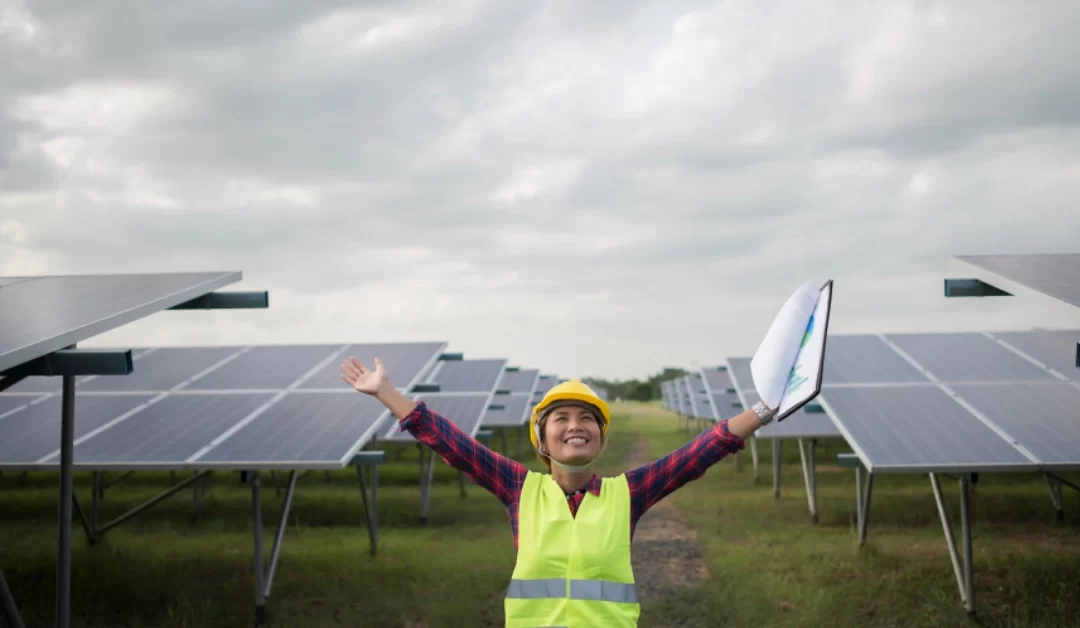Solar system projects provide an excellent opportunity to harness the power of the sun and contribute to a sustainable future. Whether you are an individual homeowner, a business owner, or a community organization, implementing a solar system project can bring numerous benefits, including reduced energy costs, environmental conservation, and increased energy independence.
Here in this blog post, we will guide you through the process of planning and executing successful solar system project ideas to selecting the right equipment and ensuring proper installation, and we will cover all the essential steps. Let’s dive in!
Generating Solar System Project Ideas
Before embarking on solar system projects, it’s crucial to define your goals and understand the scope of the project. Here are a few solar system project ideas to consider:
- Residential Solar Panel Installation: Install solar panels on your rooftop to generate renewable energy for your home. This project can significantly reduce your electricity bills and decrease your carbon footprint.
- Community Solar Gardens: Collaborate with neighbors or local organizations to develop solar system projects. This allows multiple participants to benefit from solar energy, even if they can’t install panels on their own properties.
- Solar-Powered Outdoor Lighting: Enhance the aesthetics and safety of your outdoor spaces by installing solar-powered lighting systems. This project is both functional and environmentally friendly.
Conducting a Solar Feasibility Study
Once you have a solar system project idea in mind, it is essential to assess its feasibility. Consider the following factors:
- Site Evaluation: Determine if your location receives sufficient sunlight throughout the year. Factors such as shading, roof orientation, and available space should be considered.
- Financial Analysis: Calculate the project’s cost and potential return on investment. Evaluate available incentives, such as tax credits and rebates, to determine the financial viability of your project.
- Energy Consumption Analysis: Analyze your current energy consumption to estimate the size of the solar system needed to meet your energy needs.
Selecting the Right Equipment
Choosing high-quality equipment is crucial for the success of your solar system projects. Consider the following factors when selecting solar panels, inverters, and other components:
- Efficiency: Opt for solar panels with high energy conversion efficiency to maximize the power output.
- Durability: Ensure that equipment is designed to withstand various weather conditions, especially if you live in an area with extreme temperatures or frequent storms
- Warranty and Support: Select reputable manufacturers and suppliers that offer reliable warranties and provide excellent customer support.
Securing Permits and Approvals
Before starting the installation process, make sure you obtain the necessary permits and approvals from local authorities. Contact your municipality or relevant regulatory bodies to understand the requirements and procedures involved.
Installation and Commissioning
Hiring a professional solar system installation company is recommended to ensure a safe and efficient installation. They will handle tasks such as mounting the solar panels, connecting electrical components, and integrating the system with your existing electrical infrastructure. Once the installation is complete, the system will be inspected and commissioned to ensure it meets all safety standards.
Financing Options
Investing in solar system projects can require a significant upfront cost. However, various financing options are available to make it more affordable:
- Solar Loans: Many financial institutions offer specific loans for solar system installations. These loans often have favorable interest rates and repayment terms tailored for renewable energy projects.
- Power Purchase Agreements (PPAs): In a Power Purchase Agreement (PPA), a solar provider not affiliated with you installs and maintains the solar system on your property. Under the agreement, you commit to buying the electricity produced by the system at a predetermined rate. This arrangement removes the need for upfront payment, enabling you to pay for the solar energy based on the amount consumed in kilowatt-hours.
- Leasing: Leasing allows you to use a solar system without owning it. You pay a fixed monthly fee to the system owner for the use of the equipment. While leasing may not provide the same financial benefits as ownership, it can still help reduce electricity costs.
Monitoring and Maintenance
Once your solar system is installed, it’s crucial to monitor its performance and conduct regular maintenance to ensure optimal efficiency:
- Monitoring: Utilize monitoring systems to track the energy production of your solar system. These systems provide real-time data, allowing you to identify any issues or inefficiencies promptly.
- Cleaning and Inspections: Regularly clean the solar panels to remove dirt, dust, and debris that may obstruct sunlight. Additionally, schedule periodic inspections to identify any potential maintenance or repair needs.
- System Upgrades: Stay informed about technological advancements and upgrades in solar technology. Upgrading certain components of your system can improve its efficiency and increase energy production.
Education and Engaging the Community
Solar system projects have the potential to inspire and educate others about the benefits of renewable energy. Consider engaging with your community through the following initiatives:
- Workshops and Presentations: Organize workshops or presentations to educate community members about solar energy, its benefits, and how to initiate their own solar projects.
- Open House Events: Host open house events where interested individuals can visit your solar system installation, ask questions, and learn from your experience.
- Collaboration Projects: Partner with local schools, colleges, or community organizations to develop joint solar system projects that can benefit multiple stakeholders and foster a sense of community involvement.
Tracking and Sharing Energy Savings
One of the significant advantages of solar system projects is the potential for substantial energy savings. Keep track of your energy consumption and compare it to your pre-solar installation usage. Sharing these savings with others can serve as a testament to the effectiveness of solar energy and inspire others to follow suit.
Government Incentives and Policies
Research and stay updated on government incentives and policies related to solar system projects. Many governments offer tax credits, grants, or other financial incentives to encourage the adoption of renewable energy. Understanding and utilizing these incentives can significantly offset the costs of the solar system project.
Conclusion
Solar system projects offer immense benefits and contribute to a sustainable future. By following the steps outlined in this guide, you can plan and execute successful solar system projects. Remember to assess feasibility, select the right equipment, secure permits, and hire professionals for installation. Embrace the power of the sun and take a step towards a greener and more energy-efficient future.
If you’re looking for professional assistance with your solar system project in Texas, we recommend Flagstone Roofing & Exteriors. Our team of experts has extensive experience in solar system installations and provides top-notch services. Contact Flagstone Roofing & Exteriors today to embark on your solar journey!




